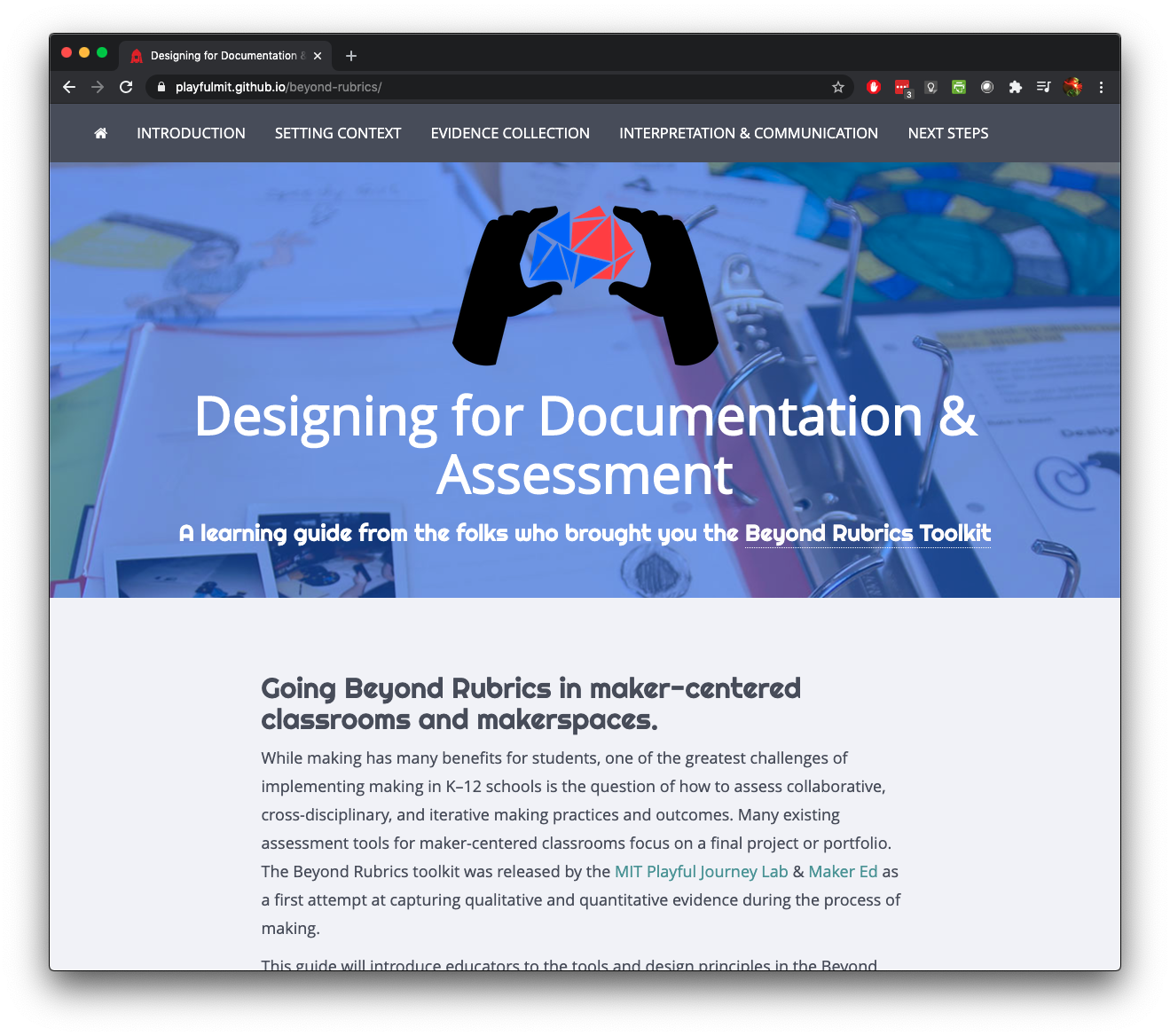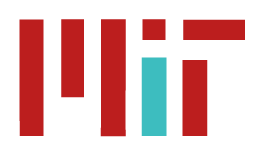
We released the Beyond Rubrics toolkit in 2019 to build educators’ capacity for assessment and reflection while implementing hands-on making in their classrooms, makerspaces, and out-of-school time programs. Today we are releasing Designing for Documentation & Assessment, a series of activities to introduce educators to the principles and tools of the Beyond Rubrics toolkit. We hope that the activities in this guide provide an opportunity for teams of teachers, educators, and facilitators to take a step back and think about the mindsets, skills, and dispositions that really matter in their makerspaces and maker-centered classrooms. This guide will provide protocols to engage in those conversations and begin to think about how you might collect evidence of your students’ engagement in these practices.
We’re releasing this guide into a world that feels very different than the one we released the Beyond Rubrics toolkit into. Teachers and schools are busy preparing for new protocols and procedures for in-person learning or are imagining new ways to engage in virtual and remote classrooms. We believe now, more than ever, that collecting evidence of the diverse ways students are engaging in learning is essential, and that assessment tools and frameworks provide opportunities to do that. Beyond Rubrics is not only about assessing pre-determined learning objectives, but about recognizing and celebrating skills demonstrated in all kinds of projects, whether they are part of remote schooling curricula or driven by students’ own interests and passions during quarantine.
In conversations with educators, one thing we’ve heard is that during emergency remote instruction in the spring it was difficult to understand how students were doing. Through a webconference window it was often hard to gather evidence of students’ learning or emotional wellbeing. Students themselves also had fewer opportunities to see what their peers were working on and give feedback and kudos. While the Beyond Rubrics toolkit was originally designed for in person, hands-on learning we think there is potential to adapt and remix some of the tools and activities to support assessment and connection in virtual and blended environments. (You can see one example of a tool remix at the bottom of the page.)
If you’d like to try your hand at modifying or designing your own tools we recommend starting by exploring the Beyond Rubrics Design Principles activity in this new resource. Then, try the Design Your Own: Rapid Design activity. In this activity, you are prompted to draw a random context, construct (a skill, mindset, interest, or practice), and secret ingredient. Based on these suggestions, you’ll spend time prototyping an activity which will elicit evidence of your construct and the mechanism for capturing that evidence. Now, rather than drawing a random “context” card at the start to use in your rapid design, substitute “Zoom classroom” and consider the following questions:
- How might you design for collaboration in your online classroom? What would evidence of this collaboration look like?
- How might you share back things you’re noticing about a student’s troubleshooting skills with the student using your school’s LMS?
- How could students collect evidence of each other’s processes while working side-by-side in virtual break-out rooms?
We’d love to see what you come up with! Tweet your designs to us at @playfulMIT with #playfulassessment.
Visit Designing for Documentation & Assessment now!
Playful Journey Lab members are also currently working on developing ways to support classrooms to document, assess, and reflect together this fall based on the Beyond Rubrics toolkit and other inspirations. If you’re interested in finding out more, send us a note via our Connect page!
—
Tool Remix Example: Digital Stuck Station
In its original form, Stuck Station is a standalone video recording station that students visit to explore a deck of “Getting Unstuck” strategies and record a video where they share what is happening and a strategy they will try next. This both helps students troubleshoot and collects evidence of a student’s troubleshooting process.
This spring, we redesigned the tool for a virtual, two-week long activity. Participants were able to use the tool using their computer or tablet with an internet connection. The video recording tablet, which would have been a part of the in-person Stuck Station, was replaced with a Flipgrid gallery. Flipgrid is a free online tool that allows students to record videos in response to a prompt.
The physical card deck of Getting Unstuck strategies was replaced with a Scratch project featuring a subset of the strategies. Participants could visit this project and be served one of the strategies. By clicking on the project, another random strategy appeared.
Not only did this tool remix allow for students to use the tool in many of the same ways as the in-person Stuck Station, it came with additional affordances:
- Collaborative Troubleshooting: In Flipgrid, unlike a physical tablet, participants could see videos posted by their peers, and use the reply function built into Flipgrid to respond. This means that participants could learn from their peers’ troubleshooting and contribute to their thinking.
- Asynchronous Use: The tool lived in free, online platforms. This allowed participants to reflect on how they were stuck while working during “school hours” or after. Additionally, since the strategies lived online in Scratch rather than in a physical card deck, participants could return to the strategies at any time.

